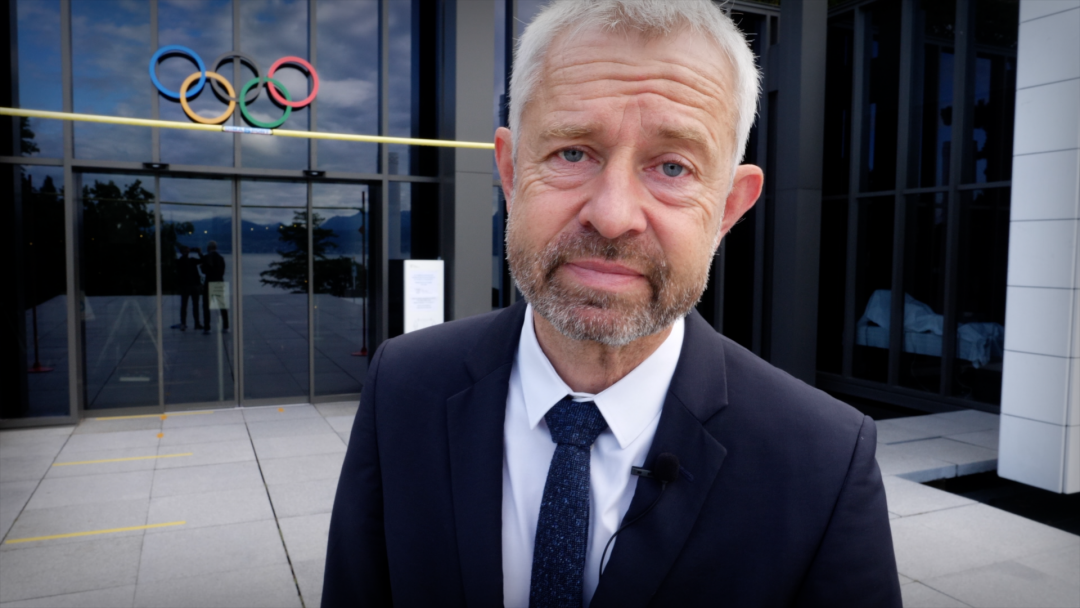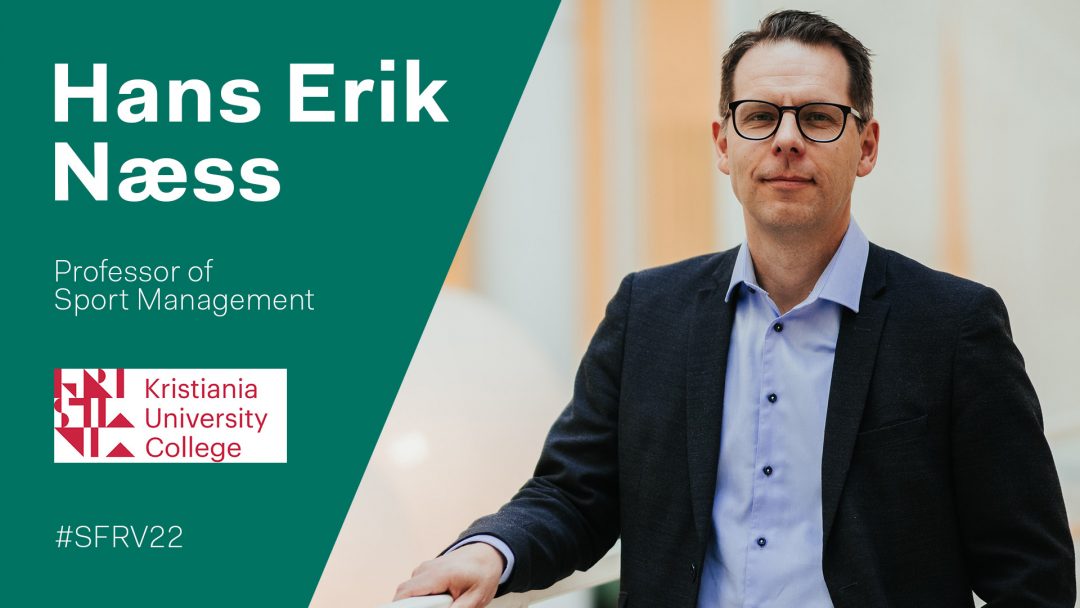Excellent panellists from wide-ranging specialist backgrounds and an engaged audience were the key ingredients for an informed debate on the sensitive topic of “gender-based violence in sport” at last week’s Sport Future Rendez-Vous.
Organised jointly by ThinkSport and the University of Lausanne (UNIL), the annual event took place at the UNIL campus on 28 September.
Key facts & figures
Dr Tine Vertommen, a criminologist and researcher on safeguarding and child protection at the Thomas More University in Belgium, got the conversation started by providing a definition of gender-based violence in sport and sharing key facts on the topic. Research shows that gender-based violence is a systemic issue: it happens across all sports, all countries, all genders and at all levels.
While the term “interpersonal violence” is used more commonly among researchers, it is evident that experiencing violence is a gendered issue. Some forms of violence affect women and girls disproportionately, compared to boys and men. But we should not overlook male victimization, which is prevalent in all forms of abuse. People with diverse gender identities also report higher levels of violence while participating in sport.
In the sporting context, the majority of the perpetrators are male; with the available data showing that female perpetrators exert more often psychological than sexual abuse. Elite athletes are more affected, which is partly related to more exposure time in sport. LGBT athletes and athletes with a disability are also more exposed, as are athletes in other equity-deserving groups, especially when it comes to psychological abuse.
Dr Vertommen also cautioned that only a very small number of affected athletes disclose such experiences within their own organisation. A recent study with sport participants in six European countries has shown that this number is as low as four to six per cent across Europe, which implies the necessity to integrate bystanders in safeguarding strategies.
Team sport example
Peer-to-peer violence is more prevalent in team sports and Ashley Ehlert, Deputy General Secretary and Legal Director of the International Ice Hockey Federation (IIHF), shared important learnings and insights from the sport of ice hockey.
She explained how stereotypes associated with the physicality of the sport, especially hyper masculinity, have led to toxic and unacceptable behaviour – both in coach to player and player to player situations.
Emotional abuse is more prevalent than physical abuse and has been normalised by many participants in the sport. Whilst a strong set of policies, rules and procedures are an important basis – and the IIHF has those in place – Ehlert said she is convinced that only awareness-raising and education can shift the sport’s culture in the long run.
Her top tip to athletes and coaches alike: you have to know what is acceptable and what is not.
Coaches must lead the way, but if they were subject to abuse themselves years ago, they wouldn’t necessarily understand the limits of acceptable behaviour. Therefore, the IIHF has created a tailored education programme for coaches. Alongside this, the IIHF also kicked off the education of its athletes at a young age (under 18), so a set of important values is engrained early on.
Ehlert emphasised that cultural change cannot be achieved overnight and needs to trickle down to national and local levels.
The IIHF has set up a 10-year strategy, which includes the creation of a safeguarding (or integrity) officer role in each National Federation (NF). The International Federation (IF) organises workshops for these national safeguarding officers and provides them with tools to reach out to their local clubs. The ultimate objective is to ensure an inclusive and safe environment for all ice hockey players across the globe.
Solutions at local level needed
Kirsty Burrows, Head of the Safe Sport Unit at the International Olympic Committee (IOC), confirmed that independent systems and structures at local level are very much needed.
For instance, if an athlete considers to report, it is important that the appointed person they are reporting to speaks the same language, and understands the local culture and context to ensure a trauma-informed approach and prevent further harm.
Acknowledging the urgency to address this challenge, the IOC announced in March that it will create a fund of USD 10 million per Olympiad to strengthen the prevention of, and response to, harassment and abuse in sport at local level.
Though admitting there was no “magic bullet”, Burrows stressed the importance of putting safeguards in place systematically. The IOC, which has tackled gender-based violence in sport since the early 2000s, has worked with all Olympic International Federations to help them set up and implement safeguarding procedures and policies. It also developed a Safeguarding Officer Certificate, which involves an eight-month course aimed particularly at IFs, NFs and National Olympic Committees (NOCs). Over three editions, more than 250 individuals from over 80 countries have graduated from this course, creating a “community of allies” for safeguarding in sport worldwide. With gender-based violence in sport having made the headlines during recent years, and with more survivors raising their voice, more and more stakeholders are getting active, said Burrows.
Tackling research and data gaps
While scaling up safeguarding measures across the sport system, practices should be evidence- informed.
Dr Lombe Mwambwa, Research Director at Lausanne-based Global Observatory for Gender Equality & Sport, highlighted the need for more reliable data and research on the prevalence of gender-based violence in all sport settings globally, looking beyond elite sport to include physical education and physical activity (PE and PA) in which a large part of the population engage.
Insights on the impact of specific safeguarding interventions in different contexts are also lacking. In addition, there are considerable variations in available data from different countries.
The Global Observatory was created in 2021 to close knowledge gaps in fields like this one and inform governments, political decision-makers and civil-society actors. It is currently working on a new digital platform, which will compile research and relevant data on gender equality and sport, PE and PA in one place, featuring progress made in specific areas and sharing good practices across sectors.
Looking at key actors like governments and sport organisations, Dr Mwambwa highlighted the importance of recognising stakeholders’ institutional role and responsibilities. They have the potential to cause harm through action (e.g. by open discrimination) or also inaction (by ignoring reports or unacceptable behaviour).
Key Conclusions
There are many factors that can compound the risks, or further enable, gender-based violence: these include a lack of diversity and inclusion, unbalanced gender ratios, reward structures centering on a win-at-all-costs mentality, lack of awareness and safeguarding education, normalisation of abusive behaviour, institutional silence, lack of respect for certain groups, inconsistency in the presence and implementation of safeguarding policies, and lack of effective national mechanisms to ensure access to recourse and remedy.
Reducing these factors means increasing prevention of gender-based violence.
Gender-based violence occurs across society, including sport and many other sectors. It is a complex social issue that requires collective and collaborative approaches to ensure appropriate, person-centred, trauma-informed and holistic responses. This can extend far outside the specialist expertise of sports organisations, and thus collaboration with public authorities, civil society and specialist expertise (e.g. researchers) and services is critical.
The composition of the panel at this year’s Sport Future Rendez-Vous clearly reflected this approach.
The panellists expressed their hope for sport to become a leading sector in safeguarding, but it will remain important to mainstream safeguarding in all activities of an organisation and allocate the necessary resources. Only then will it be possible to set up and implement comprehensive and impactful safeguarding strategies, which include policies, procedures, education and prevention as well as case management. These strategies must be based on meaningful data and it will be important to accelerate research in this critical area.
In the subsequent open discussion, the knowledgeable audience put forward several questions which were addressed by the panellists.


